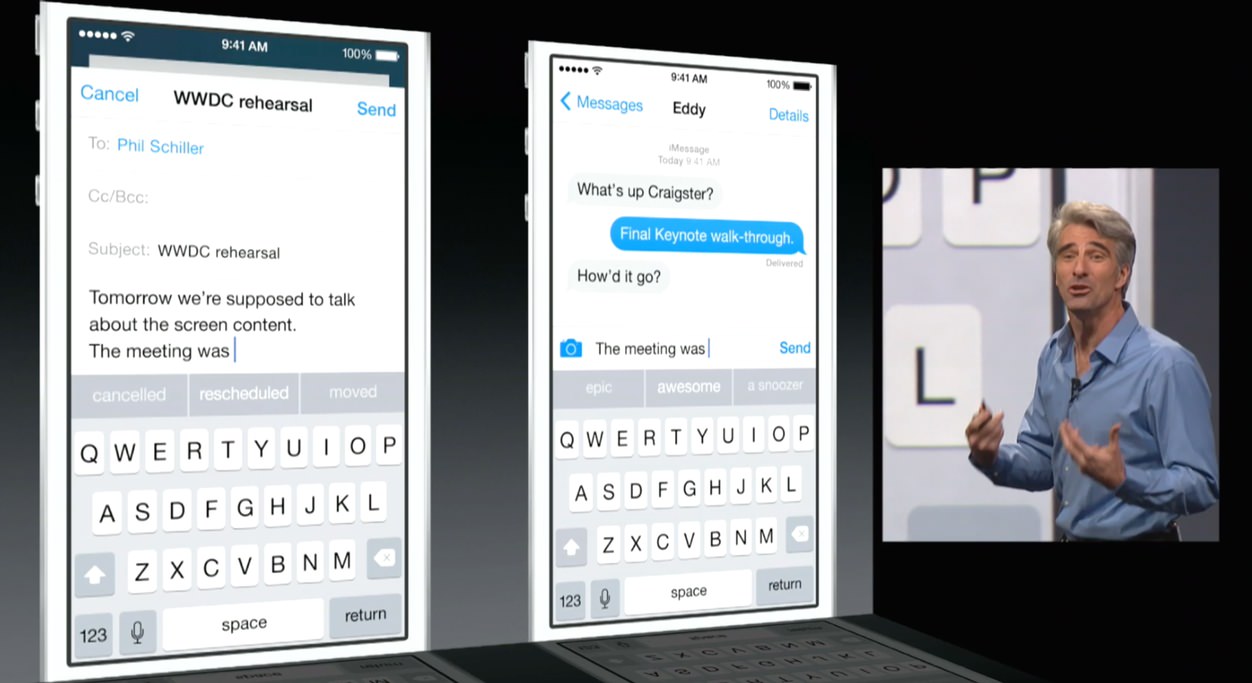WWDC-Nachlese
Viel wurde schon über die WWDC geschrieben; viel wird noch über die WWDC geschrieben. Die folgenden Artikel standen für mich bislang heraus, weil sie sich nicht den technischen Ankündigungen widmen, sondern die besondere Stimmung beschreiben, mit der Apple in der vergangenen Woche in die nächsten Jahre gestartet ist.

Apple caught up with itself this year. As with the first iPhone OS and SDK, the consumer experience (iOS 7) took priority, and developers had their day a year later. Apple has decided that moving iOS forward is as much in developers’ hands as it is in Apple’s. Consider that all this is happening at a time when Apple has more money and is hiring more engineers than ever. If anything, Apple is more suited to shut the doors and go it alone. But that’s not what’s happening.
With last week’s unveiling of the new version of iOS, a much more important dogma has been tossed into the dustbin: An app can now reach beyond its sandbox. Apps can interconnect, workflows are simplified, previously unthinkable feats are made possible.
This is the real iOS 2.0. For developers, after the 2008 momentous opening of the App Store that redefined the smartphone, this is the second major release.
I came into this years WWDC fairly mellow to what would or wouldn’t be announced. There wasn’t any anticipation or excitement the night before. Just a standard amount of curiosity. After the Keynote, I can’t remember being that excited since the announcement of the original iPhone. They blew the roof off Moscone.
It was like this, though — we kept hearing about things, even relatively small things, that all by themselves would have made for a great week. It was like the greatest Christmas ever — and then Santa Claus hung out so you could take selfies with him. This friendly and generous Apple reminds me why I love writing iOS and Mac apps.
Apple’s Continuity shows that it understands this problem better than anyone else right now; the smartphone is the centre of our computing universe, therefore it should be fully integrated with the company’s other platforms, removing all the friction of moving tasks between Mac and iPhone/iPad.
But look past the usual list of new features, and what Apple was really announcing was the next version of itself — a playful, relaxed, hyper-competitive giant that wants the next generation of products and services to be built on its platforms. That's the game now, after all — the mobile revolution is over, and the war is now between Apple and the Google / Samsung alliance for the hearts of developers.
But the big story — and the big picture — is that Apple seems to have come out of deep freeze. It feels light, like it's moving forward. Like the cobwebs have brushed aside, and things are going to get fun again. Everything we saw at WWDC's keynote points to a very interesting next few months for Apple — a period that will undoubtedly come into deep focus around the fall, when the company tends to roll out its major hardware updates. But unlike previous events, which have felt painfully predictable and iterative in the past couple of years, the next move Apple makes should be surprising.
Interestingly, Craig Federighi, whose enthusiastic joviality is a stark contrast from Forstall’s certitude, was also at Apple in 1997, having been a part of the NeXT acquisition. Crucially, though, he left in 1999 for eight years, meaning he witnessed the first part of Apple’s incredible run from afar. And perhaps that perspective helped him to move on in a way Forstall and others in the old guard could not. Again, by “moving-on” I don’t mean moving-on from Jobs’ death, but rather moving-on from the darkest parts of Apple’s past.